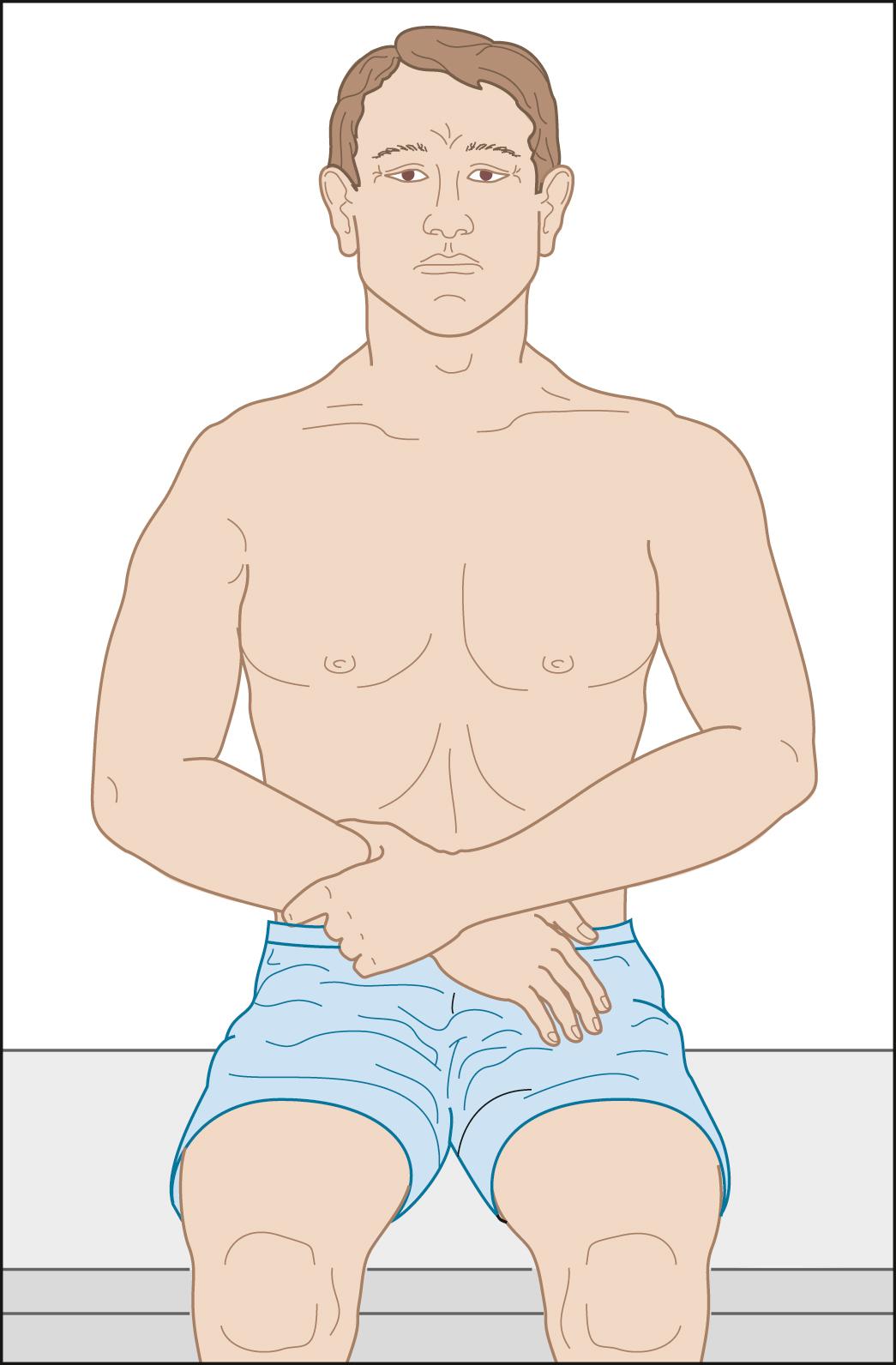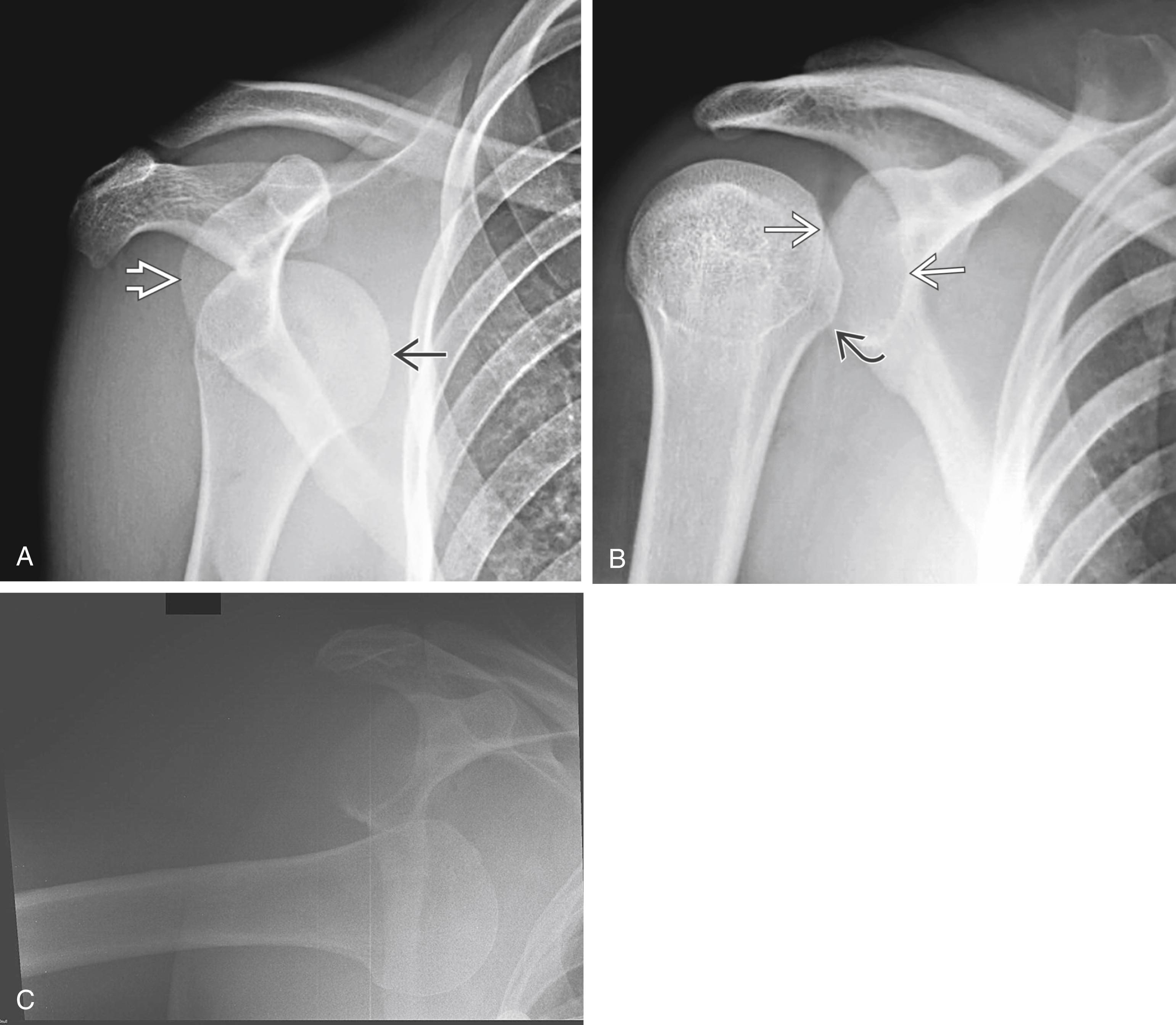Physical Address
304 North Cardinal St.
Dorchester Center, MA 02124
The patient arrives holding one arm with the opposite hand, complaining of severe pain that increases with any movement of the injured shoulder joint. The patient states that the “shoulder is out,” and is unable to move it because of the pain. Patients with anterior dislocations typically present with their arm held fixed, slightly internally rotated, and abducted.
Often, the patient had had the arm lifted horizontally to the side (“quarterback position”) when it was leveraged posteriorly, causing the dislocation. Another mechanism may have been a fall onto an outstretched arm.
Recurrent dislocations may be the result of relatively minor forces, such as those produced when reaching into the back seat of a car from the driver’s seat or rolling over while asleep.
An acute shoulder dislocation is the separation of the humerus from the glenoid fossa of the scapula at the glenohumeral joint.
The deltopectoral groove may show a bulge (caused by the dislocated head of the humerus), and the acromion appears to be prominent laterally, with an emptiness beneath the acromion where the humeral head should be ( Fig. 128.1 ).

Of shoulder dislocations, 90% to 98% are anterior, as just described. Most of the others are posterior and are usually caused by trauma (67% of cases), a seizure (31%), or high-voltage electric shock (2%). Patients arrive complaining only of shoulder pain with their arm held fixed in internal rotation and adduction. Posterior shoulder dislocations can be subtle on anteroposterior (AP) and scapular Y views. A rotation of the humeral head or so-called “light bulb sign” may be the only indication. If AP and scapular Y views are equivocal and there is a high clinical concern, an axillary lateral radiograph should be obtained ( Fig. 128.2 ).

Inferior dislocations (luxatio erecta) are rare and occur with the arm above the head at the time of injury. They are associated with high-energy trauma, specifically grasping a fixed, overhead object while falling. The patient presents with the forearm elevated to the level of the forehead and reports, “I can’t put my arm down.” Neurovascular injury and fracture often accompany these unusual dislocations, which demand urgent orthopedic consultation.
Become a Clinical Tree membership for Full access and enjoy Unlimited articles
If you are a member. Log in here